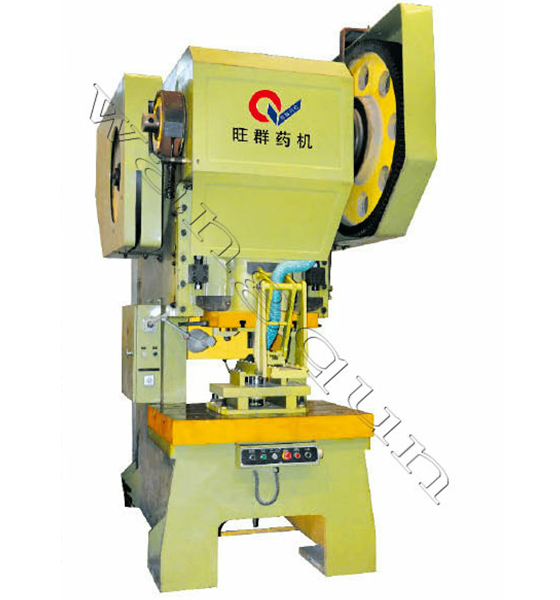Disinfection tablet press Maintenance Guide for Manufacturers
A disinfection tablet press is a critical machine in the production of high-quality disinfectant tablets, widely used in pharmaceutical, chemical, and healthcare industries. Maintaining the press ensures consistent tablet quality, extended equipment lifespan, energy efficiency, and regulatory compliance. This guide provides a detailed overview of energy-saving performance, technical advantages, application areas, and a comprehensive component list, enabling manufacturers to optimize tablet production and minimize downtime.
Table of Contents
Introduction to Disinfection Tablet Press
Technical Advantages of Disinfection Tablet Press
Energy-Saving Performance
Component and Spare Parts List
Application Areas
Maintenance and Troubleshooting Guide
Preventive Maintenance and Upgrade Plans
Conclusion
1. Introduction to Disinfection Tablet Press
The disinfection tablet press is designed to compress powder into uniform tablets, ensuring consistent size, weight, and hardness. Modern models integrate digital controls, high-capacity turrets, and energy-efficient motors for optimized production. Key benefits include:
High throughput: Capable of producing thousands of tablets per hour
Precision compression: Maintains uniform tablet weight and hardness
Energy-efficient operation: Reduced electricity consumption and lower operating costs
Safety and automation: Equipped with protective shields and PLC-controlled operations
A properly maintained tablet press ensures reliable production of disinfectant tablets for water treatment, surface disinfection, and other sanitation applications.

2. Technical Advantages of Disinfection Tablet Press
Disinfection tablet presses offer several technical advantages that enhance production efficiency and quality:
2.1 High-Precision Compression
2.2 Advanced Control Systems
PLC-based digital control for real-time monitoring
Alarm systems for abnormal pressure, speed, or feed issues
2.3 Robust and Durable Design
2.4 Easy Maintenance and Operation
| Technical Feature | Advantage | Notes |
|---|
| Turret System | High precision & high-speed production | 10–20 stations depending on model |
| Compression Force | Adjustable 20–100 kN | Ensures uniform tablet hardness |
| Control Panel | PLC with touch screen | Real-time monitoring & alerts |
| Safety Features | Emergency stop & interlocks | Protects operators |
| Feeder System | Vibratory or gravity feed | Uniform powder distribution |
3. Energy-Saving Performance
Modern disinfection tablet presses are designed to meet energy efficiency standards and reduce operational costs:
3.1 Energy-Efficient Motors
3.2 Variable Speed Drives
3.3 Optimized Compression Efficiency
| Feature | Standard Press | Energy-Efficient Press | Energy Savings |
|---|
| Motor Power | 15 kW | 12 kW | 20% |
| Idle Power Loss | 2 kW | 0.5 kW | 75% |
| Output per kWh | 5000 tablets | 6000 tablets | 20% |
3.4 Benefits of Energy Efficiency
Reduced electricity costs
Lower environmental footprint
Enhanced machine lifespan due to reduced mechanical stress
4. Component and Spare Parts List
Proper maintenance requires knowledge of the main components and spare parts:
| Component | Function | Maintenance Tip |
|---|
| Turret | Rotates punches for tablet compression | Inspect weekly and align |
| Punches & Dies | Shape and compress tablets | Lubricate and replace when worn |
| Feeder | Delivers powder consistently | Clean and calibrate weekly |
| Compression System | Provides required pressure | Monitor hydraulic/motor settings |
| Hopper | Stores raw material | Keep clean and dry |
| Control Panel | Monitors operational parameters | Calibrate monthly |
| Safety Interlocks | Protects operators | Test regularly |
| Lubrication System | Reduces friction | Refill and check weekly |
Spare parts should be kept in stock to minimize downtime during repairs or preventive maintenance.
5. Application Areas
Disinfection tablet presses are versatile and used in various industries:
Water Purification Tablets: Produces chlorine or effervescent tablets for safe drinking water
Surface Disinfectants: Produces tablets for hospital, laboratory, or industrial cleaning
Sanitizer Tablets: Produces fast-dissolving sanitizing tablets for hygiene applications
Chemical Tablets: Produces controlled-dose chemical or sanitizing tablets
Their precision, high capacity, and durability make them suitable for large-scale pharmaceutical and chemical manufacturing operations.
6. Maintenance and Troubleshooting Guide
Regular maintenance is essential for long-term reliability and efficiency.
6.1 Daily Maintenance
Clean hopper, feeder, punches, and dies
Lubricate moving parts using GMP-approved lubricants
Inspect emergency stops and safety shields
6.2 Weekly Maintenance
Check turret alignment and tightness of bolts
Inspect hydraulic or mechanical compression system
Verify powder feed consistency
6.3 Monthly Maintenance
Calibrate control systems and sensors
Inspect electrical wiring and components
Replace worn punches or dies as needed
6.4 Common Troubleshooting Issues
| Problem | Possible Cause | Solution |
|---|
| Uneven tablet weight | Powder flow inconsistency | Adjust feeder, clean hopper |
| Tablet sticking | High moisture or insufficient lubrication | Dry powder, lubricate punches |
| Cracked tablets | Excessive compression | Reduce force, align turret |
| Vibration | Loose components | Tighten bolts, level machine |
| Low output | Worn punches/dies | Replace components |
7. Preventive Maintenance and Upgrade Plans
7.1 Preventive Maintenance Schedule
| Task | Frequency | Notes |
|---|
| Turret and punch inspection | Weekly | Lubricate and align |
| Feeder cleaning | Weekly | Prevent blockages |
| Hydraulic/electrical system check | Monthly | Monitor performance |
| Full system alignment | Quarterly | Ensure consistent output |
7.2 Upgrade Options
Automatic lubrication systems for consistent performance
Energy-efficient motors and drives for lower power consumption
Advanced digital control panels for real-time monitoring
Enhanced safety sensors for operator protection
8. Conclusion
The disinfection tablet press is an essential tool for high-quality, high-volume tablet production. By adhering to a structured maintenance guide, manufacturers can:
Ensure consistent tablet quality and uniformity
Reduce downtime and repair costs
Enhance energy efficiency and sustainability
Extend equipment lifespan and safety compliance
Maintain reliability in various application areas
Proper maintenance, preventive care, and strategic upgrades allow manufacturers to maximize productivity while minimizing operational costs, ensuring long-term success in tablet production.











 Phone
Phone
Comment
(0)